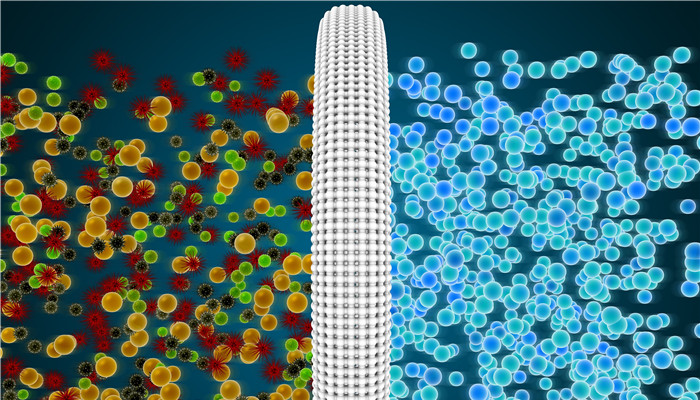
The types of water treatment membranes are becoming increasingly diverse and the market size is gradually growing.
Water treatment membrane refers to a material that plays a role in molecular-level separation and filtration. Its working principle is that when sewage containing impurities comes into contact with the membrane, if the solution concentration and pressure on both sides of the membrane are different, some molecules will selectively pass through the membrane. , other molecules will be trapped, thereby realizing the process of separation and purification of different components of the sewage, and ultimately the evolution of the sewage. Water treatment membrane does not need to add any chemicals during the purification process. It is a physical purification process and is relatively safe.
After years of development, the types of water treatment membranes have become increasingly rich. According to different raw materials, water treatment membranes can be divided into organic membranes, inorganic membranes, organic-inorganic composite membranes, etc.; according to different pore sizes, water treatment membranes can be divided into ultrafiltration membranes (UF), microfiltration membranes (MY), and reverse osmosis membranes. (RO), nanofiltration membrane (NF), etc.; according to different product shapes, water treatment membranes can be divided into roll type, tubular type, plate type, hollow fiber type, etc.
From the perspective of market segments, reverse osmosis membranes have become the largest segmented product of water treatment membranes, with a market share of 44.72%; followed by microfiltration membranes, with a market share of 30.14%; nanofiltration membranes and ultrafiltration membranes ranked third Third, the combined market share of the two is 20.12%.
In recent years, my country’s urbanization process has accelerated, the number of urban residents has gradually increased, and residents’ domestic sewage discharge has continued to increase. As well as the rapid development of my country’s industry and manufacturing industry, industrial wastewater discharge has also gradually increased. According to data released by the Ministry of Housing and Urban-Rural Development, my country’s sewage discharge volume will be approximately 62.58 billion cubic meters in 2022, a year-on-year increase of 6.13%. As my country’s environmental protection requirements gradually increase, the market demand for sewage treatment continues to grow. Compared with traditional sewage treatment technology, membrane water treatment technology has the advantages of good nitrogen and phosphorus removal, high effluent quality, small footprint, safety, reliability, and easy maintenance. It has now become a mainstream technology in the water treatment market.
According to the “China Water Treatment Membrane Industry Market In-depth Research and Development Prospects Forecast Report 2023-2028” released by the Industrial Research Center, Water treatment membrane is an important material for membrane water treatment, and its market is closely related to the membrane water treatment market. Against this background, the scale of my country’s water treatment membrane market has gradually grown. In 2022, my country’s water treatment membrane market size will be 35.469 billion yuan.
Industry analysts said that at present, foreign water treatment membrane companies mainly include LG Chem, 3M, Siemens, Dow Chemical, etc., and domestic Larger water treatment membrane companies mainly include BioWater Technology, Qinyuan Group, Wharton Technology, Jin Membrane Technology, Jiuwu High-Tech, Jindalai, etc. Foreign water treatment membrane companies started earlier, have higher technical levels, and have better overall product performance. Domestic water treatment membrane companies are late, and there is still a certain gap in product quality compared with foreign products, such as unstable performance and short service life. As Chinese companies continue to increase investment in research and development, the comprehensive performance of water treatment membranes has gradually improved, and the speed of domestic substitution has accelerated.

 微信扫一扫打赏
微信扫一扫打赏

